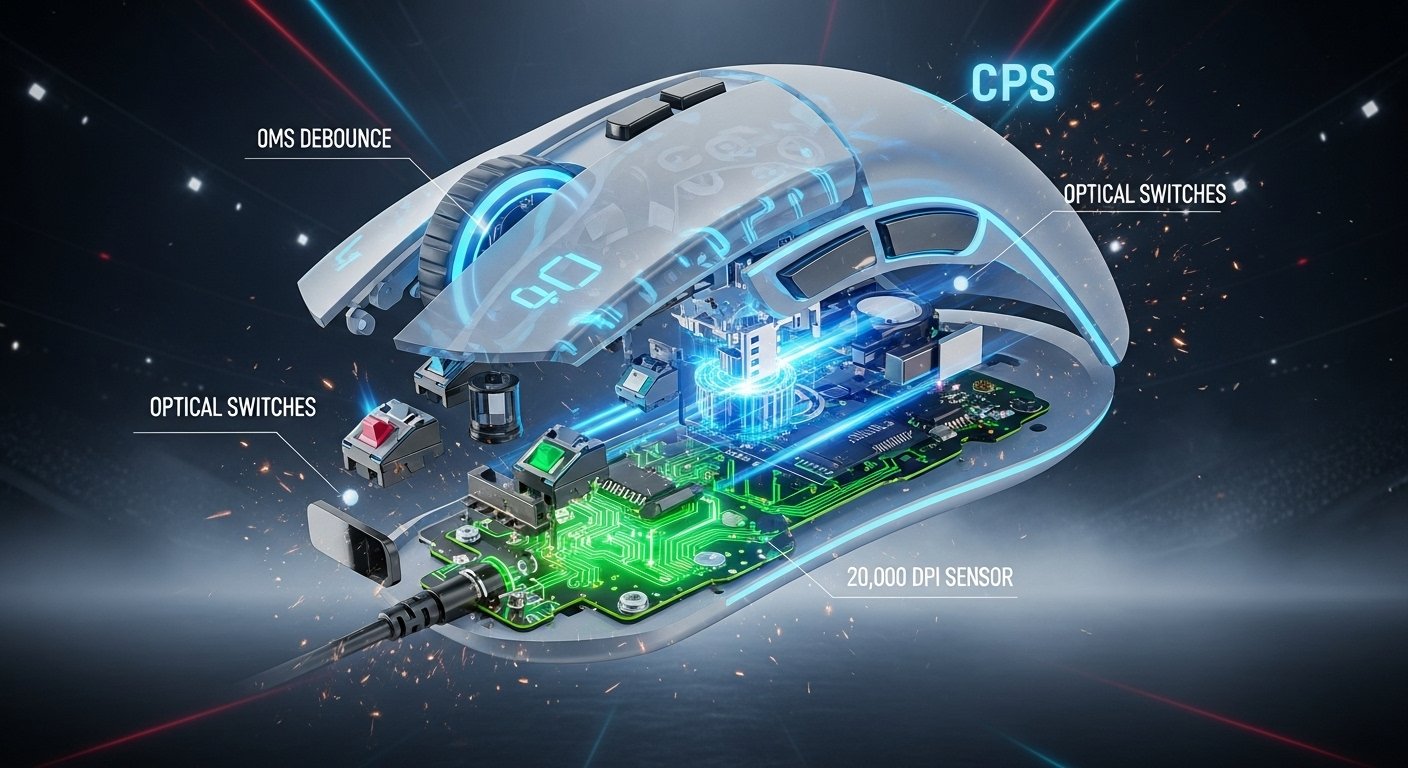You can feel the frustration bubble up. You’re in a tense Minecraft duel, perfectly positioned for the win, but your opponent’s clicks sound like a machine gun while yours feel like they’re stuck in mud. You click as fast as you can, but it’s not enough. You’ve been outpaced, out-clicked, and sent back to the respawn screen. This experience is the harsh reality for many gamers who realize that their mechanical skill is being bottlenecked by their gear. A high Clicks Per Second (CPS) score isn’t just about having fast fingers; it’s about having the right tool for the job. This guide is your definitive resource for the 5 best gaming mice for achieving a high CPS score in 2025, going beyond generic reviews to recommend hardware specifically engineered for pure, unadulterated speed.
This is not your average “best gaming mouse” list. We are diving deep into the technical specifications that truly matter for raw clicking speed—features the other guides completely ignore. You will learn about the critical importance of debounce time, the war between optical and mechanical switches, and how a mouse’s shape can unlock your potential in specific techniques like Jitter, Butterfly, and Drag clicking. Before we get to our top picks, it’s essential to know your starting point. Take a moment to benchmark your current speed with a reliable CPS test. By the end of this guide, you won’t just know which mouse to buy; you’ll understand why it’s the right choice to turn your clicks from a liability into a game-winning weapon.
Of course. Let’s break down the essential features that separate a truly “fast” mouse from the rest of the pack.
What Actually Makes a Mouse “Fast”? (A 2025 Buyer’s Guide for High CPS)
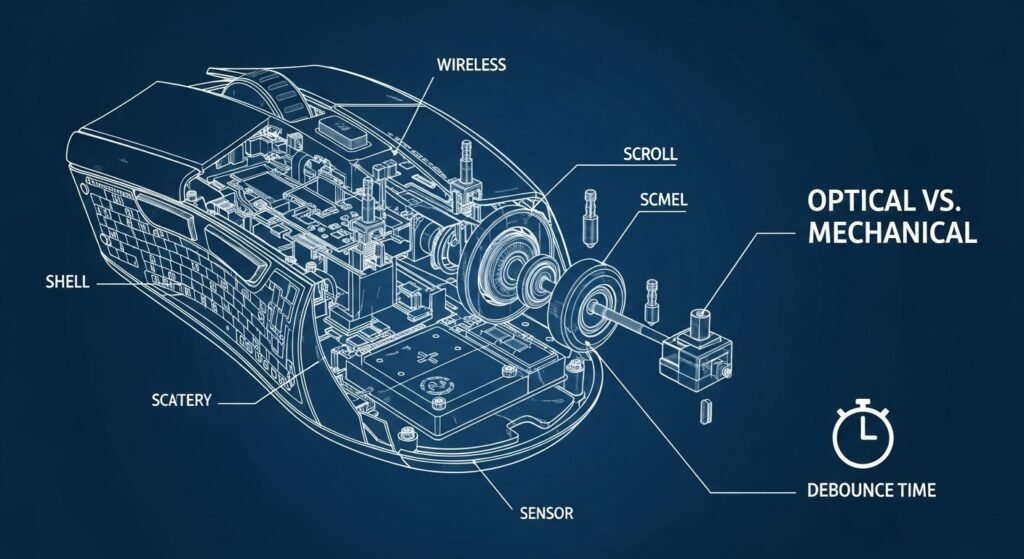
Before you can choose the right mouse, you need to understand what “fast” really means in the context of Clicks Per Second. It’s not about the DPI number on the box or how many RGB lights it has. True clicking speed comes from a specific combination of internal hardware and external design choices that most generic reviews completely overlook. This is the expert knowledge you need to make an informed decision in 2025.
The #1 Secret of High CPS Mice: Debounce Time Explained
This is the single most important factor, and it’s the one most people have never heard of. When you click a mouse, the physical switch inside can vibrate or “bounce,” which might cause accidental double-clicks. To prevent this, most mice have a built-in delay, called a debounce delay, to ignore these bounces.
For high-CPS techniques, this is a disaster. You are intentionally trying to create clicks faster than the delay can handle, causing many of your inputs to be ignored. A true high-CPS mouse, however, allows you to lower this debounce time in its software, often to 0ms. This ensures that every single vibration from a Jitter or Butterfly click is registered, unlocking your true speed potential. A mouse’s performance on an ultimate double-click test is often a direct reflection of its debounce capabilities.
Switch Wars: Optical vs. Mechanical for Speed and Durability
The component underneath your mouse button is called a switch, and in 2025, there are two main types competing for the throne:
- Mechanical Switches: The traditional standard. They use a physical metal contact to register a click. They provide a satisfying “clicky” feel but can wear out over time and are more prone to developing unintentional double-clicks.
- Optical Switches: The newer technology. They use a beam of light to register a click. When you press the button, you block the beam, sending the signal. They are incredibly fast, more durable (as there’s no metal contact to degrade), and eliminate the risk of accidental double-clicks from wear and tear. As hardware experts at sites like RTINGS.com explain, optical switches generally offer lower click latency.
For pure Jitter clicking consistency and longevity, optical switches are superior. For Butterfly clicking, where you might want to take advantage of double-clicking, mechanical switches are often preferred.
Shape & Texture: How Your Grip Style Affects Your CPS Potential
A mouse’s physical design is crucial. The best mouse for Drag clicking is often terrible for Jitter clicking, and vice-versa.
- For Jitter and Butterfly Clicking: You generally want a mouse with wide main buttons and a safe, ambidextrous shape that is comfortable to grip tightly (for Jitter) or rest two fingers on (for Butterfly).
- For Drag Clicking: This is all about friction. You need a mouse with a specific matte, slightly rubberized texture that your finger can “grip” and vibrate against. A glossy, slick mouse will make this technique impossible. You can see if your current mouse has the right surface by trying a drag click test.
The Great Debate: Does a Lighter Mouse Mean Faster Clicks?
In recent years, the trend has been toward ultra-lightweight mice. For general aiming, a lighter mouse is often better because it reduces inertia, making it easier to start and stop your movements. But does it help your CPS?
The answer is yes, but indirectly. A lighter mouse reduces overall hand and arm fatigue during long, intense clicking sessions. This means you can maintain your peak clicking speed for longer without getting tired. While it won’t magically make your fingers move faster, it will improve your stamina, which is a key component of maintaining a high score on any CPS test.
The 5 Best Gaming Mice for High CPS in 2025
After extensive research into the specific demands of high-speed clicking, we’ve selected five mice that excel in this category. This isn’t a list of the “best overall” mice; this is a specialist’s guide for players whose primary goal is to achieve the highest Clicks Per Second score possible.
1. Glorious Model O 2 – The All-Around CPS Champion
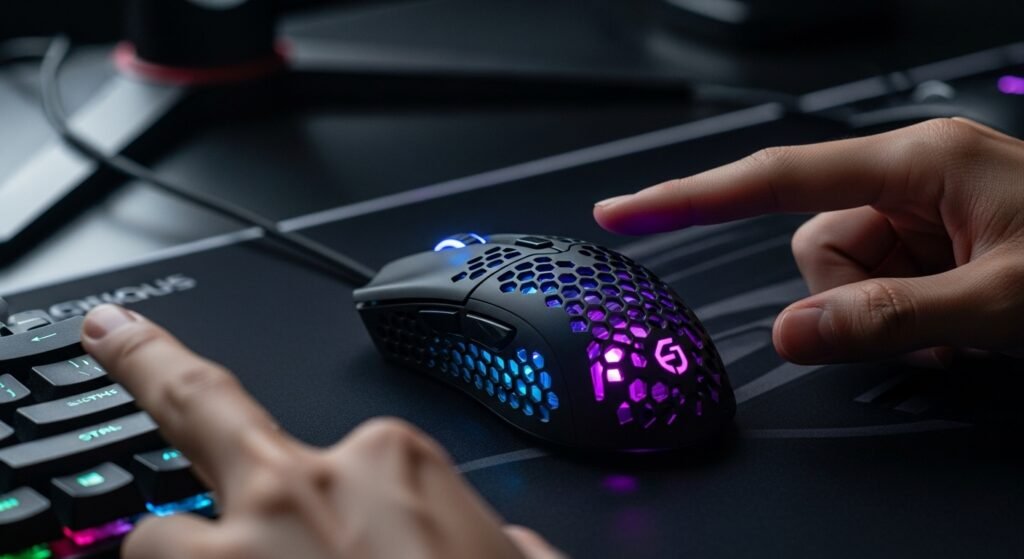
The Glorious Model O has been a legend in the clicking community for years, and its latest iteration, the Model O 2, continues that legacy. It stands out as the best all-around choice because of its incredible versatility and focus on the features that matter for speed.
- Why It Wins: The Model O 2’s greatest strength is its software. The Glorious CORE software allows you to adjust the debounce time all the way down to 0ms. It’s hard to overstate how important this is. This setting essentially removes the mouse’s internal filter, allowing it to register every single input, which is absolutely critical for Butterfly clicking. Its ambidextrous, relatively flat shape is ideal for both a stable claw grip (for Jitter) and provides ample space on its wide buttons for the two-finger drumming motion. Combined with its lightweight design, it reduces fatigue, allowing you to maintain peak performance during a long jitter click test.
- Best For: Jitter Clicking, Butterfly Clicking.
| Pros | Cons |
| Fully adjustable 0ms debounce time | Honeycomb design can collect dust |
| Excellent shape for multiple techniques | Software is less polished than major brands |
| Lightweight and comfortable for long sessions |
2. Roccat Kone XP Air – The Undisputed King of Drag Clicking
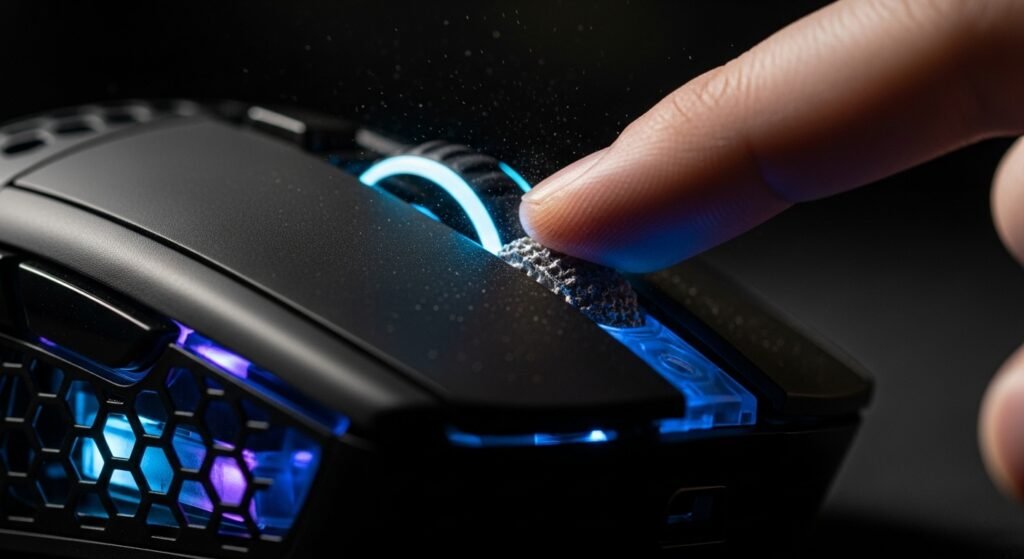
If your goal is to master the art of drag clicking, there is simply no other choice. While many mice can drag click, the Roccat Kone series feels like it was scientifically engineered for it.
- Why It Wins: The magic of the Kone XP Air is its unique ergonomic shape and its signature surface texture. The matte, slightly coarse finish on the mouse provides the perfect amount of friction for your finger to “catch” and vibrate against the switch. It’s a tactile feeling that other, slicker mice simply cannot replicate. This is why you will see this mouse in countless YouTube tutorials demonstrating mind-boggling scores on the drag click test. While its debounce time isn’t as low as the Glorious, its physical design more than makes up for it for this specific technique. As a bonus, its highly ergonomic shape is incredibly comfortable for general use.
- Best For: Drag Clicking.
| Pros | Cons |
| Perfect surface texture for friction | Heavier than other mice on this list |
| Legendary ergonomic shape is very comfortable | Not ideal for jitter or butterfly clicking |
| High-quality build and components |
3. Razer Viper V3 Pro – The Optical Switch Speedster
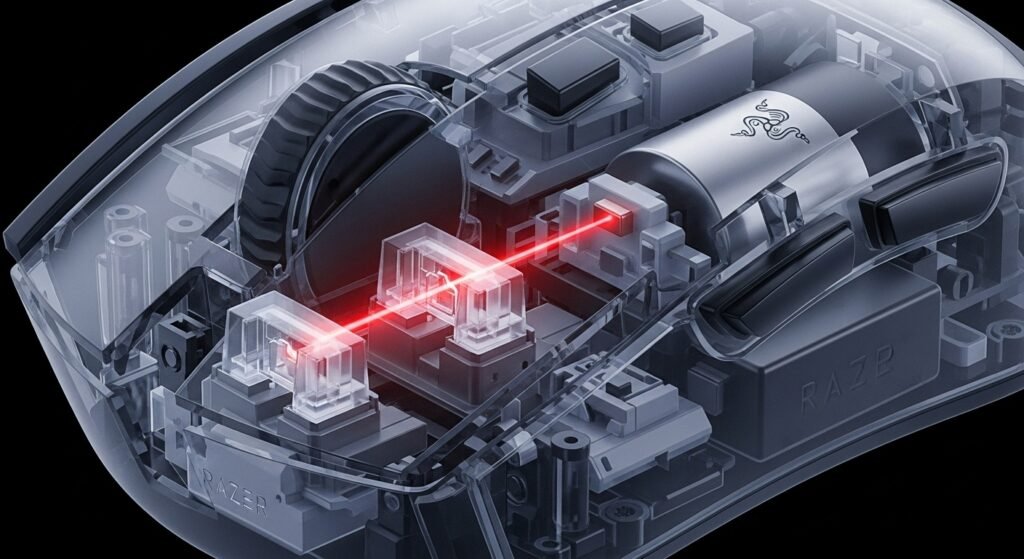
For the player who values raw Jitter clicking speed and long-term durability above all else, the Razer Viper V3 Pro is a top-tier choice. Its advantage comes from its state-of-the-art internal hardware.
- Why It Wins: The Viper V3 Pro features Razer’s latest generation of Optical Mouse Switches. As we discussed, these switches use a beam of light to actuate, making them incredibly fast and ridiculously durable (often rated for 90 million clicks or more). Most importantly, they are immune to the wear and tear that can cause mechanical switches to develop accidental double-clicks over time. This means your clicks will be just as crisp and consistent on day one as they are on day one thousand. This makes it the ultimate mouse for a pure, controlled Jitter clicking style where consistency is key. Top hardware review sites like IGN often praise the precision and reliability of Razer’s optical switches.
- Best For: Jitter Clicking, Long-Term Durability.
| Pros | Cons |
| Extremely durable and fast optical switches | Not suitable for butterfly or drag clicking |
| Lightweight, ambidextrous “safe shape” | Premium price point |
| Flawless wireless performance |
4. Logitech G Pro X Superlight 2 – The Esports Standard for a Reason
You will see the Logitech G Pro X Superlight on the desk of more esports professionals than almost any other mouse, and for good reason. While not a “specialist” mouse, its perfectly balanced design makes it an incredible platform for high-level Jitter clicking combined with elite-tier aim.
- Why It Wins: The magic of the Superlight 2 is its “safe shape.” It’s an incredibly refined, simple design that seems to fit almost any hand size and grip style perfectly. This comfort allows for a relaxed grip, which is essential for preventing fatigue and maintaining control during intense Jitter clicking sessions. Its LIGHTFORCE hybrid optical-mechanical switches are light, spammy, and responsive, making it feel like a natural extension of your hand. It’s the mouse you choose when you need a high CPS score without sacrificing a single ounce of aiming performance.
- Best For: High-Level Jitter Clicking & General FPS Performance.
| Pros | Cons |
| Legendary “safe shape” is ultra-comfortable | Not designed for butterfly or drag clicking |
| Extremely lightweight design | Very expensive compared to other options |
| Top-tier sensor and wireless technology |
5. Bloody A70 – The Budget Butterfly Clicking Legend
This is a cult classic. The Bloody A70 is not the most well-known mouse, but within the dedicated Minecraft and high-CPS communities, it is a legend. It is famous—or perhaps infamous—for one specific thing: its ability to butterfly click.
- Why It Wins: The A70 is built with a specific type of optical switch that is incredibly susceptible to registering double and even triple-clicks from the vibrations of a butterfly clicking motion. It is, for all intents and purposes, the easiest mouse in the world on which to achieve a god-tier butterfly click score. While other mice can do it, the A70 feels almost like it’s cheating. It’s an older model, and its software can be clunky, but for a player on a budget whose sole goal is to get the highest possible CPS with the butterfly technique, the Bloody A70 is an iconic and unbeatable choice. It is the very definition of a specialist tool.
- Best For: Butterfly Clicking on a Budget.
| Pros | Cons |
| Unmatched butterfly clicking potential | Outdated software and design |
| Very affordable price point | Build quality is lower than premium brands |
| Famous and proven in the community | Not good for other clicking techniques |
How to Test Your New Mouse’s True CPS Potential
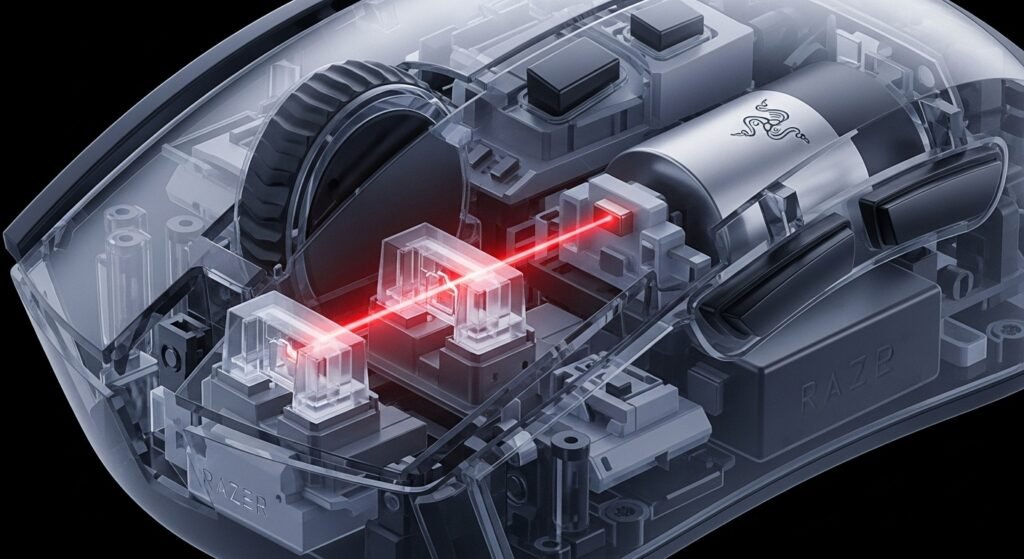
Unboxing your new mouse is just the beginning. To truly understand its capabilities and start your training, you need to run it through a series of specific benchmarks. This process will not only confirm that you made the right choice but will also give you a clear baseline score to track your improvement over time.
Step 1: Benchmark Your Raw Speed with a CPS Test
The first and most obvious step is to get a raw measure of your speed. This is where you establish your new personal record.
- How to do it: Navigate to a reliable, clutter-free CPS test. Choose the 10-second timer, as this is the gold standard for a balance of speed and stamina. Use your preferred clicking technique (Jitter or Butterfly) and give it three maximum-effort attempts.
- What to look for: Note your highest score. This is your new baseline. More importantly, look at the consistency graph. A great CPS mouse will allow you to maintain a flatter, more consistent line without a major drop-off in speed.
Step 2: Check for Double-Click Potential
This test is especially important if you chose a mouse for Butterfly clicking, like the Glorious Model O 2 or the Bloody A70. You are testing the mouse’s ability to register extra clicks from the vibrations of your fingers.
- How to do it: Use a specialized ultimate double-click test. This tool is designed to detect if a single physical press registers as more than one input. Try butterfly clicking on it and see if the counter jumps by two or more with each tap.
- What to look for: If your new mouse easily registers double clicks and your debounce time is set to a low value, you’ve got a butterfly clicking monster on your hands.
Step 3: Verify Your Drag Clicking Ability
If you invested in a specialist mouse like the Roccat Kone XP Air, this is the moment of truth. This test is all about the physical interaction between your finger and the mouse’s surface.
- How to do it: Go to a dedicated drag click test. Make sure your hand and the mouse are clean and dry. Use the proper technique of lightly dragging your finger across the button.
- What to look for: A successful result will be a long, rumbling vibration and a CPS score that is dramatically higher than what you can achieve with other methods. If you can consistently hit 30+ CPS, your mouse is a perfect tool for drag clicking.
H2: Frequently Asked Questions (FAQ)
You’ve seen the top picks and learned how to test them, but a few specific questions often come up when diving deep into the world of high-CPS hardware. Here are the direct answers you need to make your final decision with confidence.
Does a higher DPI setting mean a higher CPS score?
DPI (Dots Per Inch) is a measure of sensitivity—how far your cursor moves on the screen for every inch you move the mouse. You can learn more about it and find your ideal setting with a mouse DPI test.
CPS (Clicks Per Second) is a measure of speed—how many times you can physically press the mouse button in a second.
A high DPI makes your aim more sensitive, but it does not make your finger click any faster.
Can practicing high-CPS techniques damage my new mouse?
Is a wireless mouse good for competitive clicking?
What is a “good” CPS score to aim for with these mice?
For Jitter Clicking: With a mouse like the Razer Viper or Logitech G Pro X, a great goal is to consistently achieve 10-14 CPS.
For Butterfly Clicking: With a mouse like the Glorious Model O 2 or Bloody A70, you should be aiming for 15-20+ CPS, taking advantage of the potential double-clicks.
For Drag Clicking: With the Roccat Kone XP Air, the sky is the limit. A successful drag can yield 30-100+ CPS.
Remember, the ultimate goal isn’t just a high number on a CPS test, but a score you can achieve consistently.
Conclusion
You are now armed with the expert knowledge needed to choose a true hardware advantage. We’ve gone beyond the generic “best gaming mouse” lists to reveal the specific, technical features that separate a standard peripheral from a high-performance clicking machine. You understand that the best mouse for a high CPS score in 2025 is a specialized tool, and that the right choice depends on critical features like debounce time, switch type, and a shape that complements your preferred clicking style.
Remember that frustrating Minecraft duel from the beginning, where you were outpaced and out-clicked? That scenario is no longer your fate. You are now empowered to be the player with the machine-gun clicks, equipped with a mouse that is scientifically engineered for speed. The path to a higher CPS is a combination of skill and the right equipment, and you now have the definitive guide to solve the hardware half of that equation. Your next step is to identify your clicking style—Jitter, Butterfly, or Drag—and choose the mouse from this list that will unlock your true potential.
Which clicking technique are you going to master with your new mouse?

Hello, I’m John Harbour, a software developer passionate about creating innovative and accessible AI tools. As the creator of cps-checker.com, I enjoy building useful software and writing blogs to help people get the most out of my creations.

